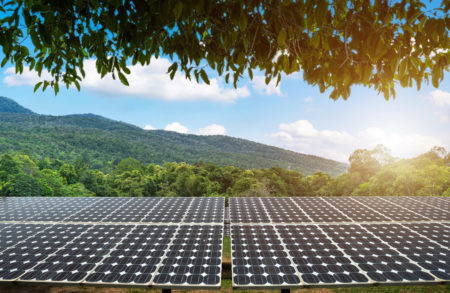
News
EUSEW
Repowering Europe by empowering energy communities
Solving systemic challenges through local solutions: energy communities as drives of digital and social innovation to achieve the EU’s energy transition
INTERVIEW
We interview Natxo de Marco, leader of Zabala Innovation's Energy Area

Energy is more than ever at the centre of European current affairs, with new generation sources bursting onto the scene, unstoppable price rises and a dependence that is being reversed with new plans and strategies. Natxo de Marco, leader of Zabala Innovation’s Energy Area, points out different keys to better understand this uncertain scenario.
The price increase in electricity bills has become one of the main social concerns. Why is it rising so much?
It is due to two factors, and contrary to what one might think, it is not because there is more renewable energy, and it is more expensive. The main reasons for the price increase are the higher price of gas on the market and the higher cost of CO2 emission permits.
The European market unifies the last price of all the energy bought at the price of the most expensive one, so that even if the electricity mix is efficient, if a particular energy is more expensive, the last price of electricity skyrockets. This is what has happened due to the rise in the price of gas, which has had a direct impact on the calculation of the closing price of electricity. It should be clarified that gas is not only used to heat our homes, but its price is also considered here due to the large gas-fired power plants used to generate electricity.
And although with less impact, the rise in the cost of CO2 emission permits is also being relevant, a cost that electricity generating companies using fossil fuels or joint cycle are inevitably obliged to pay, affecting their generation costs and affecting the final price of the electricity mix.
Are there solutions to remedy this?
To avoid this uncertainty in the price of electricity, the way forward is to gradually increase renewable energies to reduce the influence of both factors (emission rights and gas prices), as well as for European public administrations to act in the rightest way on the regulation and calculation method of the electricity market and its impact on citizens.
Are we energy efficient or do we still have a lot to learn to make the best possible use of energy?
We are on the right track, but there is still much to learn and apply. Being energy efficient affects the whole energy value chain: it starts at the point of generation (trying to maximise the capacity to harness energy from its source, improving generation systems as well as storage systems), to the point of consumption (trying to maximise the efficiency or energy performance of energy loads or consumption in housing, industry, transport).
But during the process there is also its transformation, transmission and distribution, applying transformation solutions such as advanced and intelligent power electronics, and improving the transmission and distribution systems of the grid thanks to Smart Grids and an optimised evolution of the grid, in terms of an intelligent and optimal management of voltages, transformation in substations, type of AC/DC current, and a long etcetera).
It should be added that the barriers to the implementation of such improvements are not always technical. They can be social, economic, geographic, political or environmental, and must be taken into account from the beginning of any new development to ensure its viability.
Why is proper energy storage so important?
Energy storage has the equivalent function to that of reservoirs collecting water, so that when there is a surplus resource it is stored so that when there is a need or shortage, then we can have that resource available.
The origin of this growing relevance lies in the need to maximise the use of all the renewable energy captured at the points of generation (such as wind farms or photovoltaic parks with fluctuating generation) and thus avoid that when the energy generated is not directly fed into the grid (because the supply is greater than the demand) it is not lost, but stored in the most efficient and intelligent way possible.
Therefore, electrical storage systems (batteries) are so important, as they maximise the use of the clean energy generated and are therefore the great enabler of the integration of renewables into the grid, while providing the electricity system with flexibility and stability and an adequate balance between energy supply and demand.
The commitment to renewable energies is clear. What is the great challenge now to reduce their cost?
When we talk about the cost of renewable energy, the reference is clear: it is the LCoE (Levelised Cost of Energy), which indicates for a specific generation system or plant how many euros it costs to generate 1 kWh of energy. This parameter takes into account the cost of both the total initial investment of the system (CAPEX) and all the expenses associated with its entire useful life (e.g. 20 years) that are associated with its operation and maintenance (OPEX) and compares it with the total amount of energy (E) that the system will be able to produce in that useful life.
Therefore, to reduce the cost of renewable energies, three steps must be taken. The first is to reduce CAPEX: reduce manufacturing costs, reduce the use of raw materials in quantity and make them cheaper and more local, optimise the supply chain, improve the design of generation systems, reduce installation costs, etc.
Secondly, reducing OPEX: lowering maintenance costs thanks to more robust solutions, but above all thanks to Artificial Intelligence and preventive and predictive maintenance.
And finally, to increase the energy that the system can generate (more efficient generation systems, power electronics for more efficient conversion, more efficient transmission and distribution systems, search for more efficient alternative energy solutions, etc.).
Work has been, is and will continue to be conducted along these three lines, as shown by the opportunities for European aid.
Is hydrogen a passing fad or is it here to stay?
It is necessary to qualify and insist on generating hydrogen in a clean way, that is, using renewable energies to achieve it. If we obtain hydrogen from water and we do so by consuming energy that we have generated in a renewable way, then we are talking about green hydrogen.
The technical feasibility of green hydrogen generation, which has already been proven, shows that it is here to stay. Moreover, there are multiple factors that augur well for a real future for green hydrogen: a reduction in the cost of hydrogen production (LCoH) of 62% is expected between 2020 and 2030; more than 30 countries already include green H2 roadmaps in their strategies; in the European Union the use of green H2 is expected to increase from 0% in 2015 to 23% in 2050; all energy companies (IBERDROLA, NATURGY, ENDESA, EDP, REPSOL, ACCIONA, ENGIE) are presenting projects with green H2 investments in the millions between now and 2030.
And why at this time?
Because of a combination of factors, such as the rising cost of other energies, dependence on gas or other non-European fossil fuels… At the same time, a sufficient level of technological maturity has been reached in new products and processes in the hydrogen value chain (electrolysers, etc.) that allow us to have faith in acceptable LCoH values, which is the key to making sense to invest and believe in hydrogen as an alternative clean fuel.
Another new player that has burst onto the scene is the electric vehicle. Will the electricity grid be able to cope with this extra effort?
Should we over-size the grid so that it is ready in case we all want to have an electric vehicle at the same time? Should we wait until many people buy an electric vehicle and then, when the grid cannot cope, we prepare it?
The answer is not easy, but it should be done in parallel and in an intelligent way. The electricity grid as it is currently conceived is not ready for the fleet of electric vehicles that will exist in 2030. But there is no need to be alarmed; significant efforts are being made in parallel to adapt the entire electricity system, thanks to Smart grids and the energy storage of renewables, instead of an expensive, unviable and inefficient over-sizing of the grid.
REPowerEU is the answer to curb Europe’s dependence on Russian fossil fuels. In the energy field, are there other dependencies that we should limit?
Let’s say that REPowerEU was born with the aim of being a more direct, quicker and more effective frontline weapon in the short term to fight this dependence on Russian fossil fuels, but it is not the only one. Indirectly, the other programmes already in place at European level have been contributing for years to making Europe more self-sufficient in energy consumption.
Of course, there are other dependencies that we should limit in the energy field, and they are perhaps less obvious to the ordinary citizen. We have clear examples such as lithium, which is needed for reliable and efficient electrical storage systems, although we have hardly any lithium in Europe. Another case is rare earths for the permanent magnets so necessary for highly efficient solutions for renewable electricity generation (wind farms) or electric traction with extremely low energy losses (electric motors for industrial use, electric vehicles, etc.). In this line, there are also multiple funding opportunities for R&D projects at European level that look to investigate alternative solutions or to mitigate these dependencies.
From your area, have you perceived a major change in the energy strategies of Zabala Innovation’s clients?
Entities with a relevant role in the national and European energy sector (many of them clients of Zabala Innovation) have been adapting and updating and modifying their strategy.
Our clients in the energy sector are committed to carrying out R&D or innovation/demonstration projects focused on the generation of cleaner energy solutions, which are also more realistic, more feasible and reliable and at a lower cost in order to be competitive in the energy market compared to energy generated in the traditional way with fossil fuels.
What are the most relevant European funding calls for the sector?
They could be classified into three types, depending on the level of technical maturity of the solutions:
To end as we began, will our electricity bills become more affordable in the coming years, or will they continue to get more expensive?
This is a puzzling question to answer because there are huge economic interests behind energy. The future should at least be one of price stabilisation (a reduction being complex) but with the aim that these prices have a value and meaning in terms of reducing energy dependence on foreign countries and at the same time ensuring a remarkably high percentage (almost a majority) of clean energy generation.
It should not be a price only associated with the electricity market/pool and with a high/medium level of uncertainty set by the large energy companies. Therefore, a certain degree of public interventionism and optimisation and homogeneity of European energy policies will also be necessary.
With this video you can learn more about the work of Zabala Innovation’s Energy Area.

News
EUSEW
Solving systemic challenges through local solutions: energy communities as drives of digital and social innovation to achieve the EU’s energy transition

Opinion
Innovation Fund

Rocío Fernández
Consultant

Publication
INTERREG PROGRAMME
In this comprehensive ebook by Kaila you can learn more about the main European territorial cooperation programme.
We provide advice to activities that encourage innovation, aimed at promoting the development of new innovative markets from the demand side, through public procurement.
The expertise gained working with different EU programmes over the past decades has made Zabala Innovation the best partner to manage your European project.
Europe offers many opportunities to support and foster Research, Development and Innovation actions. Competition is high and being well positioned among stakeholders active in each sector requires a well thought-out plan of action and an active way of promoting visibility in Brussels.
This website uses cookies so that we can provide you with the best user experience possible. Cookie information is stored in your browser and performs functions such as recognising you when you return to our website and helping our team to understand which sections of the website you find most interesting and useful.
Strictly Necessary Cookie should be enabled at all times so that we can save your preferences for cookie settings.
This website uses Google Analytics to collect anonymous information such as the number of visitors to the site, and the most popular pages.
Keeping this cookie enabled helps us to improve our website.
Please enable Strictly Necessary Cookies first so that we can save your preferences!
This website uses the following additional cookies:
(List the cookies that you are using on the website here.)
Please enable Strictly Necessary Cookies first so that we can save your preferences!